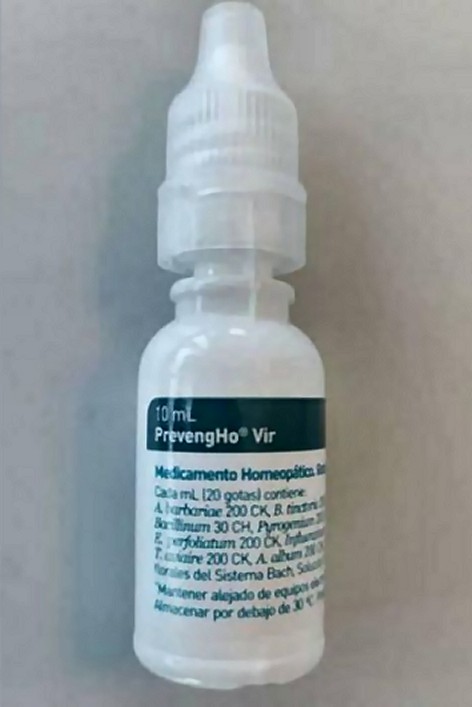|
All you should know
about homeopathy
Origins, contemporary
homeopathy, preparation and display of the product, clinical trials,
official statements, placebos, and much more.
-
Origins.
The German doctor Christian Friedrich Samuel Hahnemann
published the homeopathic proposals for the first time in “Organon
der Heilkunst”, in 1810. They were extended later in six volumes of
“Pure Medical Matter” between 1820 and 1827. At Hahnemann’s time the
fact that all living beings are formed by cells was not fully
established. Even though M. Malpighi had confrmed the presence of
cells in vegetal tissues in 1675 using the microscope, and A. van
Leeuwenhoek had described cells and its nucleus in 1719, the
definitive cellular theory of living organisms was postulated for
plants and animals only in 1838 and 1839, respectively, by M.J.
Schleiden and T. Schwann. Hence, at Hahnemann’s time the complex
biochemical, physiological, and functional relations of the
different organs in the human body at cell level remained unknown.
Modern biochemistry, as recognized today, began with the synthesis
of urea in 1828 by F. Wöhler, when he proved that organic compounds
could also be synthesized out of the living beings, contrary to the
generalized believe that these compounds could only be formed inside
of them. When Hahnemann published his books, surgeries were carried
out without anesthesia (Crawford, 1842), it was not known that
microbes were the cause of many illnesses (Pasteur and Koch, 1870)
and the role of vitamins in the organism was ignored (Gowland,
1906). Penicillin and antibiotics were unknown (Fleming, 1929); as
well as x-rays, radioactivity and genetics, and the present criteria
about ethics, clinical trials, biasing, the Evidence-based Medicine
and the Cochrane collaboration were not established.1
See details.
-
Contemporary
homeopathy. Up today,
contemporary homeopaths preserve Hahnemann’s proposals without
change, although the homeopathic postulates have nothing to do with
the development of physics, chemistry, biology, medical, and any
other science in the last 200 years. It has been pointed out that if
a doctor of the XIXth century would come to the present day, would
have to renew all its knowledge. If a homeopath of the XIXth century
would come to the present day, would not have to renew anything.2
-
Preparation
and display of the product. The homeopathic products
form by means of a series of successive dilutions and a manual
agitation of the receptacle after every dilution, many times up to a
point in which there does not remain practically nothing of the
original substance (mother dye) in the final product. They display in
similar form to conventional medicines, but usually without specific
indications about its form of preparation or real content of the
allegedly ‘active’ product (see figure). The usual form of
consumption is putting several drops under the tongue. A variant is
to add a drop of the final dissolution to a sugar pellet as in Figure
1, to swallow it as a pill.3
-
A paradise
for opportunistic. The preparation features of the
homeopathic products build paradisiac conditions for all kinds of
opportunisc people. In most cases (concentrations 12CH and higher,
allegedly the more potent by homeopaths) there is no way of
differentiating a homeopathic product of a simple mixture of mineral
water and flavoring, as well in its liquid form or as mixed with
sugar. Since in both cases the original substance is practically
absent of the fnal product, it is impossible to demonstrate
before a court the attempt of swindle by means of chemical
analysis, or any other technique. The consumer has no more option
that to trust blindly in the one who gives him the product, which in
many places sells without supervision of any state agency that
guarantees its authenticity (as it happens, on the contrary, with
conventional medicines or foods, which most times are subject to
strict sanitary regulations).
-
Clinical
trials. The most recent clinical trials (metaanalysis
Cochrane) on homeopathy,4 designed to avoid tendentious (biased)
results and based on modern criteria about the ethics, the real
beneft to the patients and the clear differentiation of the placebo
effect,5 do not show real benefts of the homeopathy in
any condition beyond the placebo.6
References
1. See History of Medicine in
wikipedia.org
2. http://www.geocities.ws/rationalis/homeo-una-ilusion/RCF-2501-
2008-p38.pdf
3. Ana Portilla Ferreira, Ana Granados. La
homeopatía suspende matemáticas in
www.geocities.ws/rationalis/homeopatia/2018/Suspende%20matematicas/index.htm
4.
http://www.geocities.ws/rationalis/2019/resumen-clinico/index.htm
5.
http://www.geocities.ws/etica-placebo/bueno-malo-feo/index.htm
6. Homeopatía in
www.geocities.ws/rationalis/
|




Actualized
09/11/2020 |




